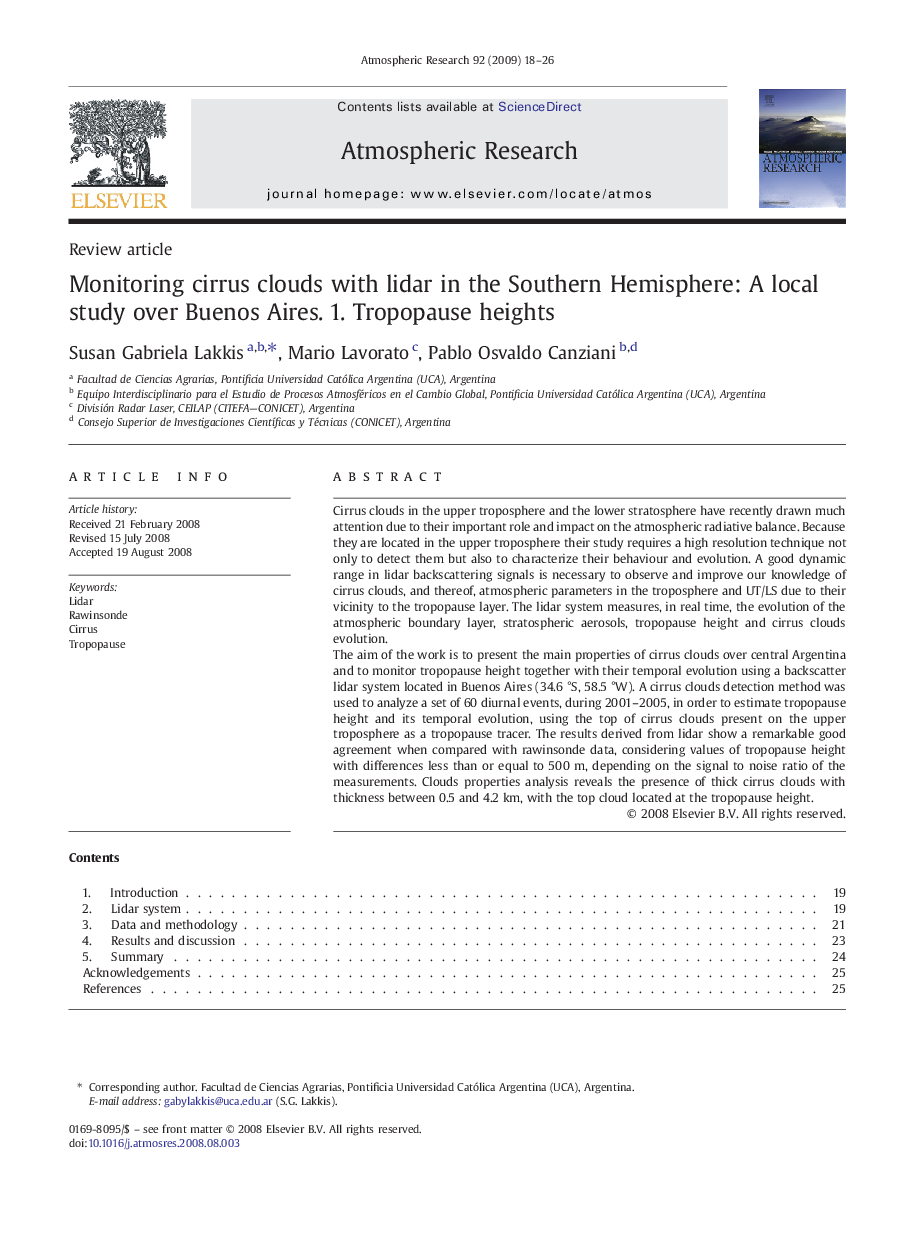| Article ID | Journal | Published Year | Pages | File Type |
|---|---|---|---|---|
| 4450926 | Atmospheric Research | 2009 | 9 Pages |
Cirrus clouds in the upper troposphere and the lower stratosphere have recently drawn much attention due to their important role and impact on the atmospheric radiative balance. Because they are located in the upper troposphere their study requires a high resolution technique not only to detect them but also to characterize their behaviour and evolution. A good dynamic range in lidar backscattering signals is necessary to observe and improve our knowledge of cirrus clouds, and thereof, atmospheric parameters in the troposphere and UT/LS due to their vicinity to the tropopause layer. The lidar system measures, in real time, the evolution of the atmospheric boundary layer, stratospheric aerosols, tropopause height and cirrus clouds evolution.The aim of the work is to present the main properties of cirrus clouds over central Argentina and to monitor tropopause height together with their temporal evolution using a backscatter lidar system located in Buenos Aires (34.6 °S, 58.5 °W). A cirrus clouds detection method was used to analyze a set of 60 diurnal events, during 2001–2005, in order to estimate tropopause height and its temporal evolution, using the top of cirrus clouds present on the upper troposphere as a tropopause tracer. The results derived from lidar show a remarkable good agreement when compared with rawinsonde data, considering values of tropopause height with differences less than or equal to 500 m, depending on the signal to noise ratio of the measurements. Clouds properties analysis reveals the presence of thick cirrus clouds with thickness between 0.5 and 4.2 km, with the top cloud located at the tropopause height.
